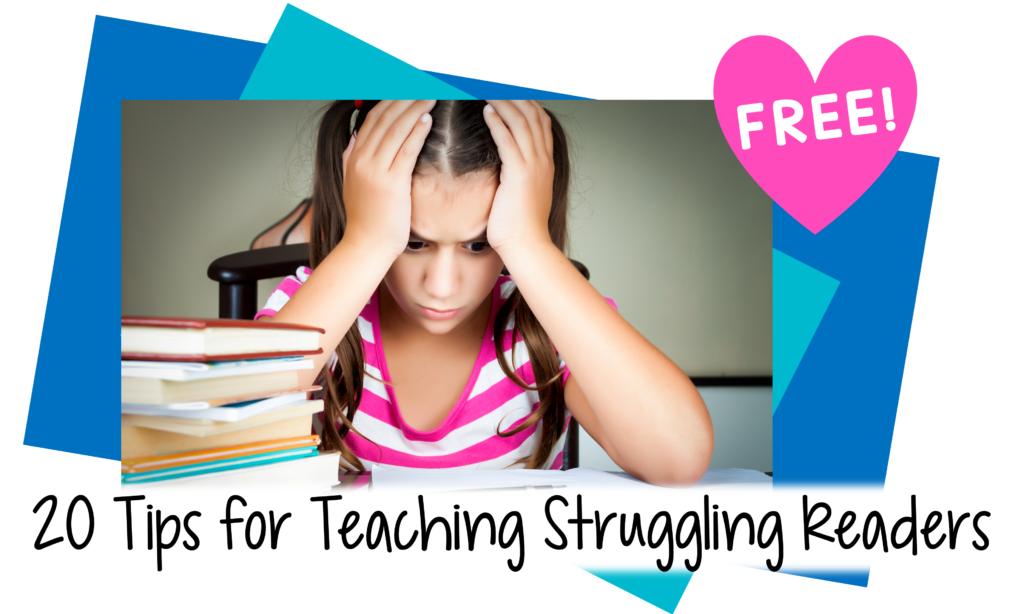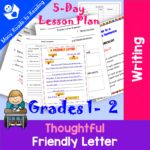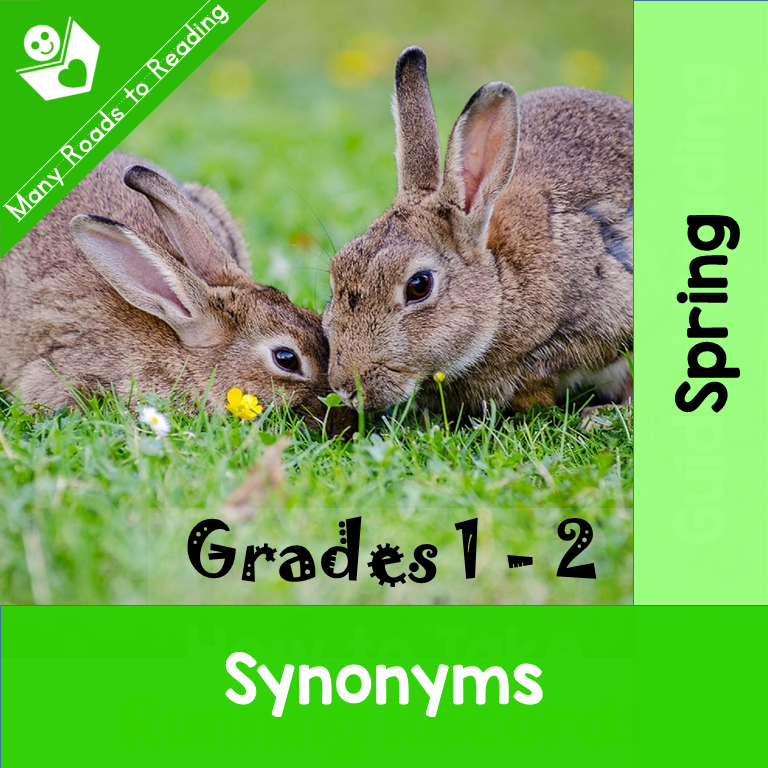
Ah, springtime at last!
The grass is turning green; flowers are blossoming; baby animals are being born; summer’s not far away. Don’t you just love spring fever? The trouble is, our students can barely sit still.
How can we keep them focused inside the classroom, when they would rather be outside playing? What can we do to keep them in the present, when their minds are thinking ahead to summer vacation? Here are a few ideas to keep our students’ attention from drifting out the window and make them more literate at the same time.
New Genres
The good news is that, as we near the end of the school year, our students have progressed in reading and writing enough that more opportunities have opened up. Now we can introduce new genres such as:
- Poetry
- Plays
- Fantasies
- Nonfiction
- Friendly letters
Listening to and reading multiple examples of a given genre is great inspiration for writing in that genre as well.
Poetry
Spring is a perfect time to teach poetry. April is National Poetry Month, and with good reason. What a season for awakening our five senses! Lessons about the senses can easily be combined with reading and writing poetry. It’s also fun to focus on one engaging poet, such as Shel Silverstein or Jack Prelutsky. For children in kindergarten and first grade, look for sets of poems that include a lot of sight words. You can also teach your students about different types of poems, or focus on one type in preparation for writing poetry.
- Rhyming
- Acrostics (S-P-R-I-N-G, M-O-T-H-E-R, F-A-T-H-E-R)
- Haiku
- Free verse
- Cinquains, quatrains, diamantes
Hand-written poems are a great gift for Mother’s and Father’s Day.
Plays
These days there are a lot of plays available for young children. Reading plays aloud is an enjoyable way to sharpen students’ reading fluency. The readers’ theater technique has kids read from a script without worrying about costumes, props, or sets. You can differentiate by assigning different roles to different kids, by modifying the scripts, or by having two children share one character. Check out these series:
Does your class have a favorite read-aloud novel or picture book from the year? Then turn the book into a reader’s theater script as a class. Have the class take turns dictating the script to you, or make it a shared writing activity. The children can create plays from folk tales or picture books they have read. Small groups can write their own plays and perform them for the rest of the class.
Fantasies
Fantasies have unreal plots and settings, and the characters often have special powers. Because they are less predictable, they are sometimes harder to read than realistic fiction. Fantasies can range from simple stories with talking animals to those that take place in magical kingdoms. Examples are:
- The Frog and Toad books
- The Borrowers
- Magical Tree House books
- The Miraculous Journey of Edward Tulane
- A Wrinkle in Time
- Harry Potter
If your students are not ready to read certain books, you can let them experience fantasy worlds by reading aloud to them. I find that having youngsters write fantasies can be problematic, as they can get carried away with special powers. But you can have kids draw events while you are reading to them, and then later use the drawings to create a story map of that fantasy on the bulletin board. Write character sketches, or use Venn diagrams to compare and contrast different fantasies.
Nonfiction
The kids can now tackle nonfiction, which often includes unique vocabulary that was previously too challenging for them to decode. We can capture students’ interest by livening up reading topics:
- Seasonal weather, including extreme weather
- Seasonal sports and athletes
- Animal life cycles (migrating birds; animals coming out of hibernation; tadpoles and frogs; monarch butterflies; chicks hatching)
- Insects, bugs
- Baby animals
- Deciduous trees
- Historical fiction
- Biographies of famous people or favorite authors
- Spring holidays
Maybe you want to focus on a given theme for the end of the year. One year my Special Education students read and wrote about endangered species. Another year my 2nd graders focused on animal life cycles. You can pick different books on the same theme for Read To, Read With, and Read By. It’s effective to introduce new vocabulary through an interactive read-aloud, and then give the students easier books on the same topic to read in small groups, pairs, or singly. The paired reading approach espoused by the Two Sisters in The Daily Five is very effective. Two children take turns reading, but first summarize what they heard their partner just read.
I like to spend a week or two on nonfiction research projects, with students working in pairs. The broad animal topic is a popular one. Have your students pick the animal from a list you have made, based upon the books you have; or assign different animals, matching your available reading resources with specific students. Use nonfiction books, magazines, newspapers, children’s encyclopedias, in hard copy or online.
Another option is to have everyone write about the same animal, but have different partners report on different aspects of the animal (babies, habitat, food, etc.). This is a great opportunity for children to stretch beyond their normal reading level. Teach research skills (using the table of contents, index, headings, etc.) and note-taking. Graphic organizers are helpful to show children the information they are looking for. After the children write one or more paragraphs about their animal, they can read to each other and decorate the classroom with their illustrated reports. Or, for extra excitement, publish the reports as pop-up books!
Friendly Letters
I like to call letters a genre. We certainly have to learn how to write them, and anyone who has received a letter can attest to how nice it is to read a physical letter written to you. Emails and text messages are the latest form of written messages, but let’s hope letter writing doesn’t become a lost art.
Many children’s books have been written about letter writing, and reading these books to your class is a great way to introduce letter writing. Here are a few:
- Dear Dinosaur
- Can I Be Your Dog?
- The Day the Crayons Quit
- The Jolly Postman
- Ramona’s World
After introducing letter writing, decide what kind of letters you want your students to write. Graphic organizers are helpful, at first, and kids love to copy their final draft on fancy writing paper. Here are some opportunities for writing letters at the end of the year:
- Letters of appreciation to people in school
- Thank you notes to friends, family members, people in school
- Letters to next year’s class
- Memory Books (letters to yourself)
Fun Challenges
Spring is a fun time to present challenges to your students. I love to inspire my students to try to think up certain kinds of words or find them in their reading. After writing the words on index cards, staple the cards together vertically. Hang them somewhere in the room—say, on a windowsill—and challenge your students to find enough words to reach the floor by the end of the year. You can also present other types of challenges

- Different “said” words (cried, shouted, exclaimed, etc.)
- Spring nouns, verbs, adjectives, adverbs (flowers, run, rainy, quickly)
- Synonyms, antonyms, homonyms
- Book reading challenges
- Paragraph writing challenges
- Behavior challenges
Hands-on Learning
One of the best ways to keep children’s attention in the spring is to combine reading and writing with concrete activities.
- Planting seeds (for Mother’s Day gift, class garden). Read about the life cycle of plants, plant the seeds, and have the kids write out directions for taking care of the plant.
- Noun Town in Spring – Kids match spring nouns with images and place them on a town map. Complete on the table or on the bulletin board.
- Hatching chicks – Read about the process of hatching and taking care of chicks. Write daily journals about what happened.
Classroom Changes
It’s fun to change the classroom around after spring break, so the kids return to the room with a “Wow!”
- Change the desks or tables around in a way that will facilitate your spring assignments. For example, leave room for a stage in the front of the room for readers’ theater, or pair up the desks in preparation for the research project the kids will be working on in twos.
- Design seasonal bulletin boards that the students will help create (e.g., Noun Town in Spring).
- Put up clotheslines on which you will hang students’ writing creations and other projects.
Take Care of Yourself
The best way to deal with your own spring fever is to take care of yourself! Hopefully you will be excited about the spring lessons you design for your students, but be good to yourself in other ways, as well.
- Take tiny steps at organizing for next year and putting away what you can before the end of the year.
- Reward yourself each time you design a new unit.
- Get some teachers to go for a walk with you after school.
- Eat lunch outside with colleagues once a week.
- Bring flowers into your classroom.

Happy Spring!








Leave a Reply